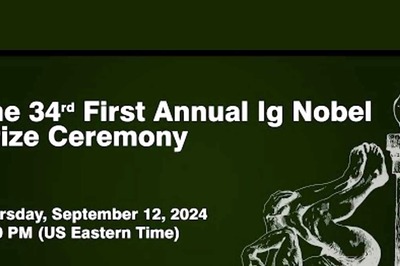
views
It’s a study in contrast. You can find hectic activity at the AP State Museum in Public Gardens and just a few yards away stands the Health Museum, devoid of life and all but forgotten. Due to the bio-diversity conference which just commenced on Monday, everyone has been in a mad rush to make the city and its landmarks, including the State Museum, presentable. Somehow, the Health Museum has escaped everyone’s notice.
The State Archaeology department has spent Rs 5.5 lakh for sprucing up the State Museum. Electrical works, signages, labels, showcase repairs, laying of lawns, painting of walls and what not, everything has been completed at a brisk pace. In an upbeat mood, their expectations too have risen sky high.
“We expect increased footfall and so, have decided to keep the museum open till 8 p.m instead of 5 p.m for the duration of the bio-diversity conference,” said P Gayatri, Director, State Archaeology.
But there’s a catch. The power cuts, officials fear, could embarrass them in front of foreigners and dignitaries in case they do visit in the evenings any day between Oct 1 and 19. “Every day, there is power cut between 9 and 10:30 am, and 3 and 4:30 pm. This is causing real difficulties,” said an official. Gayatri, however, said, “For the 20 days of the bio-diversity conference, we have made arrangements for a generator so that the visitors are not troubled.” The State Museum has a large collection of stone and metal sculptures from ancient and medieval Andhra. It has a Buddhist gallery, Brahmanical & Jain gallery, Bronze gallery, Arms & Armour gallery, and Numismatics gallery.
In the nearby compound, the Health Museum is almost in a dilapidated condition. The museum which was established in 1948 and inaugurated by the then prime minister Jawaharlal Nehru, was touted as a one of its kind in the country. It has since been maintained by the State Health, Medical and Family Welfare Department.
The exhibits and books appear to be as old as the building itself. Without proper lighting and maintenance, many of the charts and photographs look dusted and the chemicals in the jars containing different organs need to be replaced. The museum is divided into sections -- food & nutrition, family welfare, environment hazards and health & sanitation.
“There is a definite need for upgradation. Even authorities realise the need for restoration of the once state-of-the-art museum,” said a museum official. With more visitors expected through the month, officials say they are helpless. “Files are moving slowly,” they said with a decidedly resigned air.
On an average, about 1,000-1,500 students and research scholars visit the health museum every week.

















Comments
0 comment